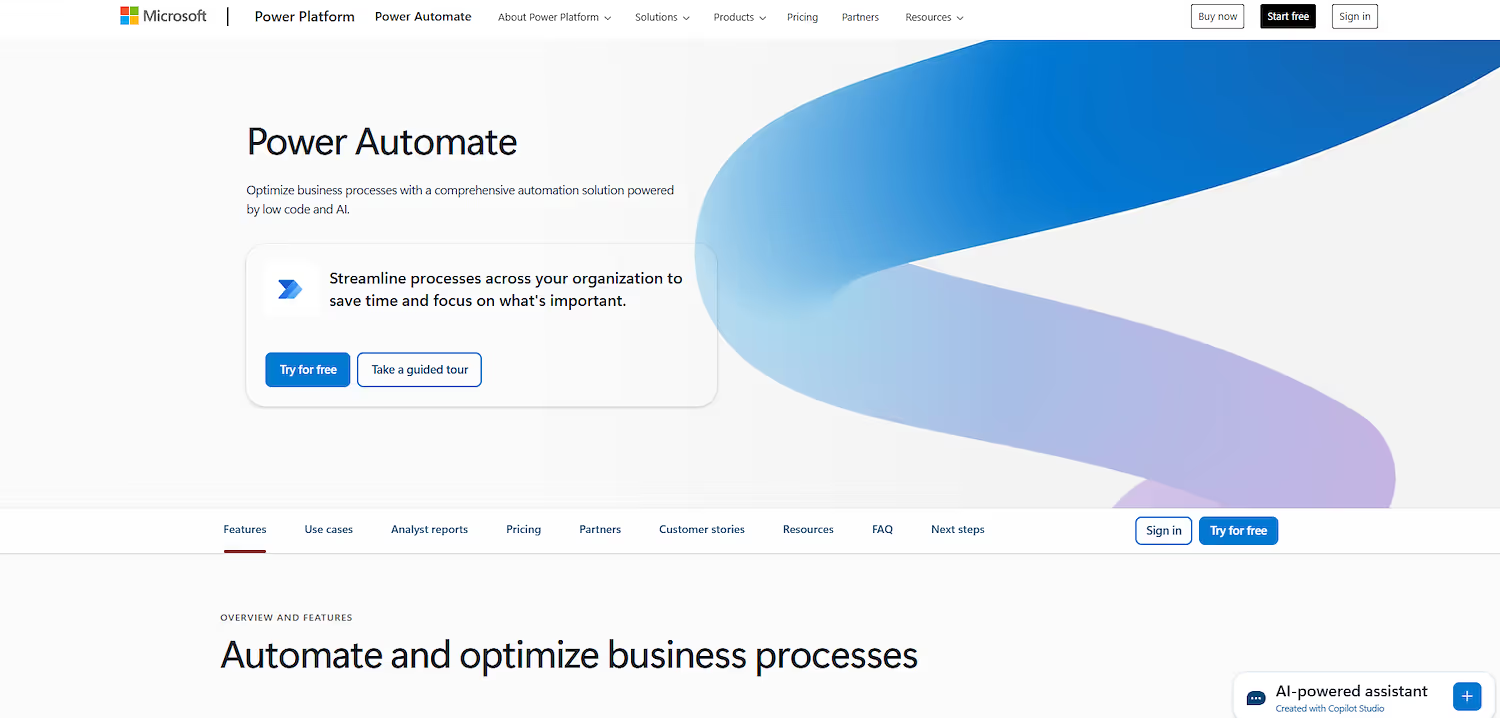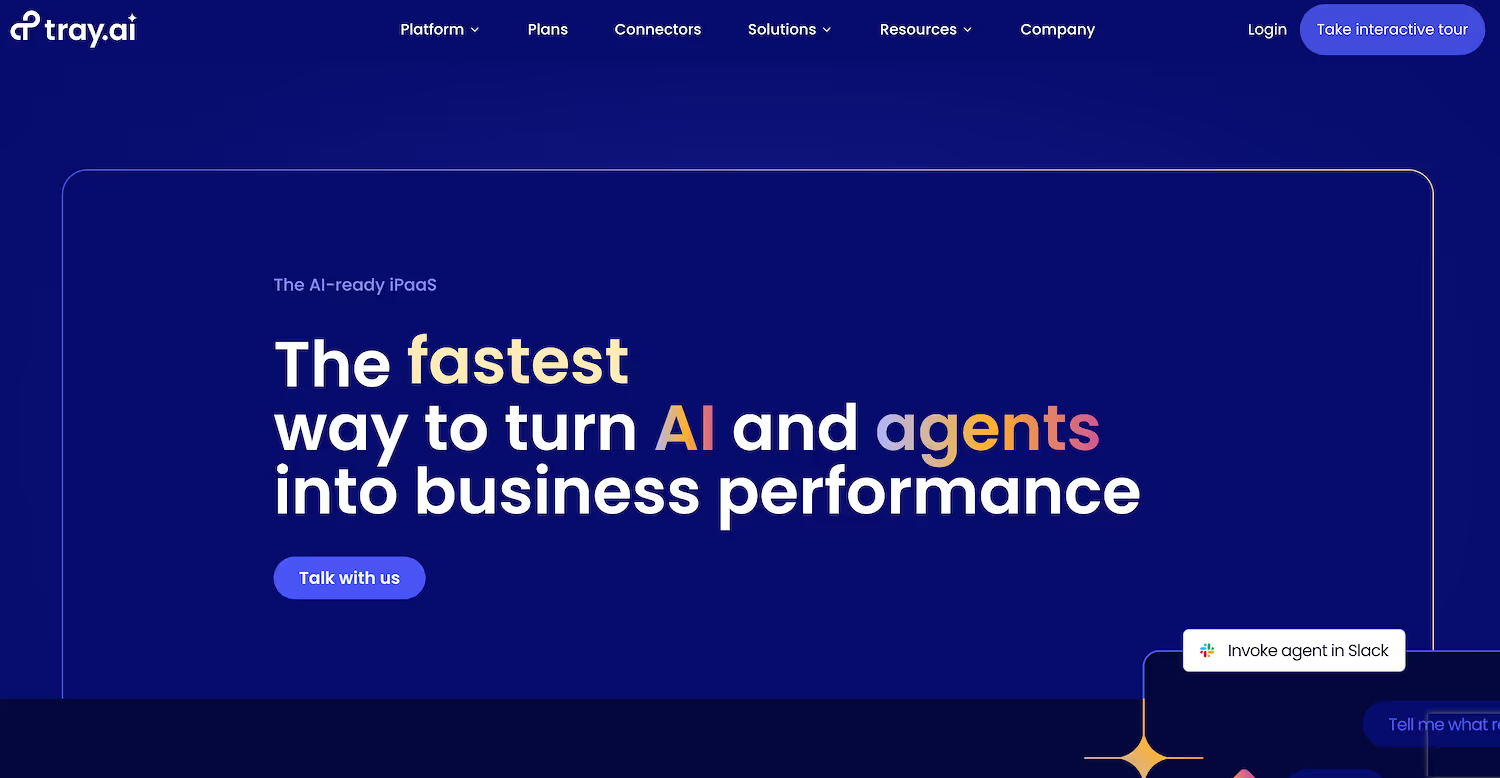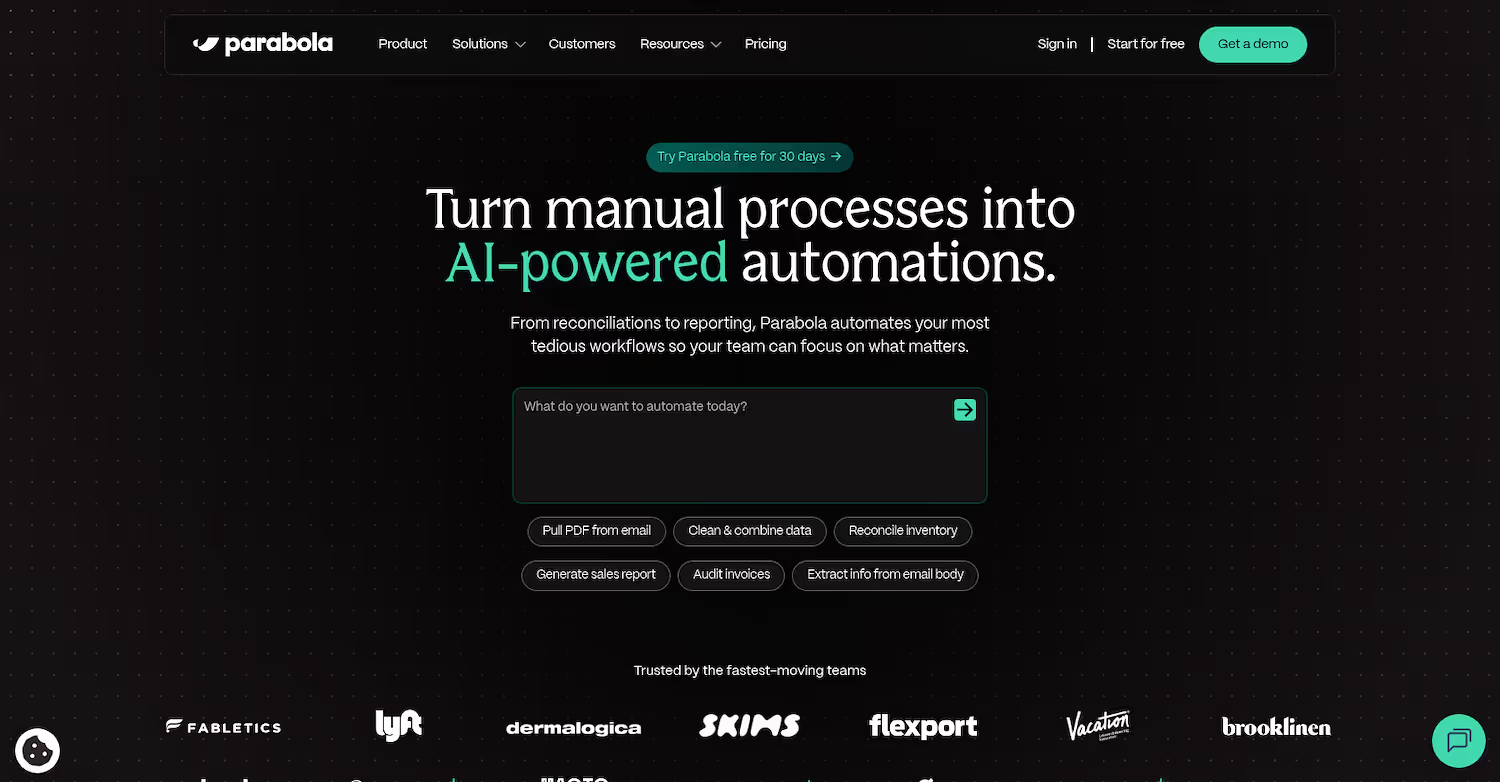Make Alternatives
Find your Make alternative. This guide offers a detailed comparison of 10 automation platforms, analyzing features, pricing, and overall fit.

Many people use Make for its strong automation and easy integrations. Its visual workflow builder is a big plus, letting teams connect apps without deep technical knowledge. It's a solid tool for many tasks.
However, some users find it complex and its error handling tricky, which may lead you to look for other options. We analyzed the top alternatives based on G2 reviews to help you shortlist the best fit. Let's get started.
11x: Digital Workers for Your Sales Team
For teams with a sales focus, 11x offers digital workers. These agents perform specific tasks like lead research and outreach. They fit into your existing process. This is a targeted solution for companies that need to augment their sales force.
11x is a GTM platform that uses AI agents to manage the sales process. Its agent, Alice, finds prospects, performs outreach on email and LinkedIn, and updates the CRM. A second agent, Julian, qualifies inbound leads and books meetings.
The platform replaces separate point solutions for data enrichment, outreach, and email warmup. This allows companies to unify these functions and consolidate their GTM stack into a single platform.
Make Alternatives
This section provides a detailed breakdown of each alternative. We analyze their pricing, features, and how they stack up against Make, noting both strengths and potential drawbacks.
1) Zapier

Zapier is an AI orchestration platform that connects over 300 AI tools with nearly 8,000 SaaS apps. It lets users build automations without code. The platform acts as a single hub for AI workflows, agents, and chatbots with enterprise-grade security.
Use cases include IT help desk automation, lead management, and data synchronization. It also supports sales operations, marketing campaigns, and customer support chatbots.
Zapier's Main Features
- AI Agents: This feature, currently in beta, builds custom autonomous agents that work across your entire app stack.
- AI Chatbots: You can create no-code chatbots to solve customer problems and answer FAQs, which is also in beta.
- Canvas: An AI-assisted planning space, in beta, helps turn ideas into automated systems.
- Interfaces: This tool lets you build drag-and-drop front-ends for any of your workflows.
How Zapier Compares To Make
Average Review Score: 4.5/5 stars based on 1,368 G2 reviews.
- Zapier connects with nearly 8,000 apps, a larger library than Make offers. This provides more options for niche or specialized tools.
- Its step-by-step editor is often easier for beginners to learn for simple automations, compared to the visual canvas in Make.
- The platform provides beta features like AI Agents and AI Chatbots to build autonomous workflows, a different focus from Make's core automation.
- A unique feature is Interfaces, a tool to create simple front-end applications for your workflows, which is not a native part of Make.
Zapier's Drawbacks Compared To Make
- Zapier's task-based pricing can become expensive for high-volume automations. This model may be less cost-effective than Make's, where complex scenarios often consume fewer paid 'operations'.
- Its linear workflow editor sometimes makes complex automations with multiple paths difficult to visualize. Make's visual canvas provides a clearer overview for branching logic and intricate processes.
- Troubleshooting can be a challenge in longer workflows. Some users report that identifying the exact point of failure is less direct compared to Make’s visual, real-time execution flow which helps spot errors instantly.
Budget and Pricing Considerations
Make's paid plans are more budget-friendly for smaller teams, with its Core plan starting at $9 per month compared to Zapier's Starter plan at $19.99. The price difference widens at higher tiers; Make's Pro plan is $16 per month, while Zapier's Professional plan costs $49.
2) Microsoft Power Automate

Microsoft Power Automate is a low-code platform for business process automation. It connects cloud services, on-premises systems, and desktop apps through digital and robotic process automation. The tool integrates with Microsoft 365, Dynamics 365, Azure, and has over 1,400 certified connectors.
Use cases include SAP procurement automation, approval workflows, and in-app automation within Excel and Teams. The platform uses AI to process documents and for data-driven triggers.
Microsoft Power Automate's Main Features
- Process and task mining: This feature maps existing workflows to find optimization opportunities and identify high-value automation targets.
- Desktop automation (RPA): It provides robotic process automation for desktop applications, supporting both attended and unattended bots that can be auto-scaled.
- Governance and security: The platform offers centralized control through managed environments, data-loss prevention policies, and live usage analytics.
- AI capabilities: You can use Copilot for natural-language flow creation and leverage pre-built AI models for document and image processing.
How Power Automate Compares To Make
Average Review Score: 4.4/5 stars based on 679 G2 reviews.
- Microsoft Power Automate offers native integration with the Microsoft 365 suite, including Teams and Excel, which is deeper than the connections available in Make.
- It includes Robotic Process Automation (RPA) to automate tasks on desktop applications, a feature not central to Make's cloud-focused automation.
- The platform provides process mining tools to analyze existing workflows and find automation opportunities, an analytical feature that Make does not offer natively.
- Its governance and security controls suit large enterprises and provide more centralized management and data-loss prevention policies than Make's standard features.
- The Copilot feature lets you build automations with natural language, a different method from Make's visual, drag-and-drop scenario builder.
Power Automate's Drawbacks Compared To Make
- Some users report a steep learning curve for complex workflows. The interface can feel less intuitive for multi-step processes than Make's visual canvas, which helps users build and see intricate automations more clearly.
- The tool sometimes provides generic error messages that make debugging difficult. This is different from Make, where a real-time visual execution flow helps users pinpoint the exact point of failure in a workflow almost instantly.
- Its pricing model can become costly when you need premium connectors for non-Microsoft apps. Make's plans are often more budget-friendly, and its operation-based pricing may be more cost-effective for complex scenarios that use many different apps.
Budget and Pricing Considerations
Make's Core plan starts at $9 per month, while Power Automate's Premium plan is $15 per user, making Make a more budget-friendly entry point. Power Automate's costs can increase with specialized add-ons, so for a full breakdown, check the detailed pricing on Microsoft Power Automate's official website.
3) Workato

Workato is an enterprise automation platform that combines AI agents, search, and integration-platform-as-a-service (iPaaS) capabilities. It connects data, applications, and workflows so teams can design and manage automations without heavy code.
Use cases span from quote-to-cash and new employee setup to incident management and B2B document exchange.
Workato's Main Features
- The platform provides AI agents for IT, sales, and support, along with an enterprise search function and a studio to build custom agents.
- It includes an enterprise orchestration suite for API management, data orchestration, and B2B/EDI integrations.
- Workato offers an embedded iPaaS with pre-built, white-labeled integrations for SaaS companies to include in their own products.
- The platform comes with automation accelerators, which are out-of-the-box recipes for processes like ticket escalation and procure-to-pay.
How Workato Compares To Make
Average Review Score: 4.7/5 stars based on 566 G2 reviews.
- Workato provides enterprise-grade features like API management and process orchestration, a different approach compared to Make, which focuses more on individual workflow scenarios.
- The platform includes an embedded iPaaS for SaaS companies to add white-labeled integrations to their own applications, a capability Make does not offer.
- It offers automation accelerators, which are ready-to-use solutions for complex business processes like quote-to-cash. Make's templates usually cover simpler, more specific tasks.
- This tool has built-in capabilities for data orchestration and B2B/EDI integrations for large-scale data exchange. Make handles data within workflows but does not have these specialized enterprise features.
Workato's Drawbacks Compared To Make
- Workato's pricing is geared toward large enterprises and can be a significant investment. This model differs from Make's plans, which are often more budget-friendly for teams that need to automate a high volume of tasks without enterprise-level features.
- Some users find the platform's extensive features create a steep learning curve. In contrast, Make's visual canvas often allows for a more intuitive way to build and manage complex automations, especially for users without a technical background.
- Troubleshooting complex workflows in the tool can sometimes be less direct. Make offers a real-time visual execution that helps users pinpoint the exact point of failure in a scenario, which simplifies the debugging process.
Budget and Pricing Considerations
Make offers transparent, budget-friendly plans starting at $9 per month. Since Workato's pricing is custom for enterprises, we recommend visiting Workato's official website for the most accurate information.
4) Tray.io

Tray.io is an automation platform that uses a visual workflow builder to connect cloud services. It allows teams to create integrations and automate processes across their entire software stack.
The platform handles use cases for various departments, including marketing automation, sales operations, and data synchronization between systems.
Tray.io's Main Features
- The platform includes Merlin Agent Builder, a low-code tool to design, test, and deploy generative AI agents with memory and context retention.
- It offers Agent Accelerators, which are pre-built templates for use cases like ITSM, knowledge management, and customer support.
- A feature called Merlin Guardian safeguards personally identifiable information and other sensitive data within AI workflows.
- The platform has a module for building and launching integration marketplaces for a company's own customers.
How Tray.io Compares To Make
Average Review Score: 4.5/5 stars based on 156 G2 reviews.
- Tray.io offers a low-code tool to build generative AI agents with memory. This provides a different AI capability than Make's core automation, which focuses on connecting app triggers and actions.
- The platform includes a specific feature, Merlin Guardian, to safeguard sensitive data in AI workflows. This offers a more targeted data protection layer than the general security settings available in Make.
- It lets you build an integration marketplace for your own product's customers. This is different from Make, which focuses on automating a company's internal workflows rather than creating external-facing integrations.
- The platform provides pre-built templates called Agent Accelerators for specific business functions like ITSM. This is a more targeted approach than Make's broader library of general workflow templates.
Tray.io's Drawbacks Compared To Make
- Some users find Tray.io has a steep learning curve for complex rules. Make's visual canvas can be more intuitive for users who need to build and manage intricate automations without a deep technical background.
- Troubleshooting complex workflows in Tray.io can sometimes be less direct. In contrast, Make provides a real-time visual execution that helps users find the exact point of failure in a scenario, which simplifies the debugging process.
- The platform's pricing is often geared toward larger enterprises and can be a significant investment. Make's plans are generally more budget-friendly for teams that need high-volume automation without enterprise-level features.
Budget and Pricing Considerations
Make offers transparent plans starting at $9 per month. Tray.io provides custom pricing for enterprise clients, so for accurate details, we recommend visiting Tray.io's official website.
5) n8n

n8n is a source-available workflow automation tool. It uses a visual, node-based editor to connect applications and build workflows with minimal code.
Use cases include data synchronization, report creation, and the management of business processes. The platform offers both cloud and self-hosted deployment options for greater control over data and infrastructure.
n8n's Main Features
- Offers a source-available version for self-hosting via Docker, providing full data control and access to the source code.
- Includes code nodes that allow for custom JavaScript and Python scripts directly within the visual workflow builder.
- Provides a canvas to build multi-step AI agents that connect with any LLM and use custom tools.
- Features a white-label embedding SDK for SaaS companies to add automation features into their own products.
How n8n Compares To Make
Average Review Score: 4.8/5 stars based on 92 G2 reviews.
- n8n provides a source-available version that you can self-host. This gives you full control over your data and infrastructure, which is different from Make's cloud-only platform.
- The tool includes code nodes to run custom JavaScript or Python scripts inside a workflow. This offers more technical flexibility for complex logic than Make's standard no-code modules.
- It features a white-label SDK for SaaS companies. This lets you embed automation features directly into your own product, a capability not offered by Make.
- A dedicated canvas lets you build multi-step AI agents that connect with any large language model. This is a different approach to AI than Make's focus on connecting app triggers and actions.
N8n's Drawbacks Compared To Make
- Some users find that n8n's node-based interface can become cluttered with large workflows. This is different from Make's visual canvas, which often provides a clearer overview for complex, multi-step automations.
- Troubleshooting can sometimes be difficult due to generic error messages. In contrast, Make offers a real-time visual execution that helps users find the exact point of failure in a scenario almost instantly.
- The self-hosting option requires technical maintenance and DevOps skills. This creates an operational overhead that does not exist with Make’s fully managed cloud platform, which handles all infrastructure for you.
Budget and Pricing Considerations
Make offers a more budget-friendly entry point with its Core plan at $9 per month, while n8n's Cloud Starter plan begins at €20 per month. This price difference extends to the Pro tiers, positioning Make as a more cost-effective choice for teams prioritizing lower costs on cloud plans.
Final Recommendation: 11x for Sales Teams
While the platforms above offer broad automation, sales-focused teams may find a specialized solution more effective. 11x provides digital workers for tasks like lead research and outreach, fitting into your existing sales process. For GTM automation, explore what 11x offers.
At 11x, we use AI to manage your sales process. Our agent Alice identifies accounts, enriches data, and handles outreach. Julian takes calls, qualifies leads, and books meetings. We replace separate tools for intent data and email warmup, consolidating your GTM stack into one platform.
Book a demo to see 11x in action.
6) IFTTT

IFTTT is a platform that connects apps and devices. It uses simple "If This, Then That" statements, called Applets, to create automations. The service supports a wide range of integrations for both personal and business applications.
Common uses are smart home control, social media content syndication, and personal productivity tasks like file management.
IFTTT's Main Features
- Uses pre-built automations called Applets that users can enable with a single click.
- Provides full-featured iOS and Android apps to create and manage automations from any location.
- Includes an AI tool to automatically generate content for blogs and social media posts.
- Offers a platform for developers and partners to build and integrate their own services for free.
How IFTTT Compares To Make
Average Review Score: 4.5/5 stars based on 113 G2 reviews.
- IFTTT uses simple, pre-built automations called Applets. This approach is different from Make's visual canvas, which is designed for building more complex, multi-step workflows from scratch.
- Its full-featured iOS and Android apps let you manage automations on the go. This mobile-first focus is distinct from Make, which centers on a web-based editor for building scenarios.
- The platform offers a free option for developers to build and publish their own service integrations. This is a different model compared to Make, where integrations are managed centrally by the platform.
- A built-in AI tool generates content for social media and blogs. This is a more focused feature than Make's broader approach of connecting to various external AI services.
IFTTT's Drawbacks Compared To Make
- IFTTT uses a simple "If This, Then That" model, which supports single-step automations. This is different from Make's visual canvas that lets users build complex workflows with multiple branches and conditions for advanced business processes.
- Some users report that troubleshooting a failed Applet can be difficult. In contrast, Make offers a real-time visual execution flow that helps pinpoint the exact point of failure in a scenario, which simplifies the debugging process.
- The platform's reliance on pre-built Applets may limit customization for specific needs. Make provides more granular control over each step in a workflow, which allows for advanced data handling and custom logic not always available in IFTTT.
Budget and Pricing Considerations
While pricing models can vary significantly between tools, Make offers paid plans starting at $9 per month. For the most accurate and up-to-date pricing information on IFTTT, we recommend visiting IFTTT's official website.
7) Integrately

Integrately is an automation platform that connects over 1,250 apps using 1-click integrations. It provides a library of 1,100+ ready-made automations for marketing, sales, and support use cases. The service allows teams to connect their software and automate processes without code.
Integrately's Main Features
- Offers over 20 million pre-built automations that can be activated with a single click.
- Uses SmartConnect technology to automatically map fields between apps, removing the need for manual setup.
- Provides a service where an in-house team builds automations for users at no extra cost.
How Integrately Compares To Make
Average Review Score: 4.7/5 stars based on 683 G2 reviews.
- Integrately offers a large library of ready-made automations that you can activate with one click. This is different from Make, where users typically build scenarios from a visual canvas, even with a template.
- The platform provides a service where its team builds automations for you at no extra cost. This is a hands-on support model not offered by Make, which centers on a self-service build experience.
- Its SmartConnect feature automatically maps fields between connected apps. This can reduce setup time compared to Make, where you often must map data fields manually in each module.
- The tool is designed for simplicity with its 1-click setup. This approach may be faster for non-technical users with simple tasks than Make's visual builder, which offers more control but can require more configuration.
Integrately's Drawbacks Compared To Make
- Integrately's focus on 1-click automations can be a limitation for complex workflows. In contrast, Make's visual canvas gives users more control to build scenarios with multiple branches and advanced logic for intricate processes.
- Troubleshooting in Integrately can sometimes be less direct. Make provides a real-time visual execution flow that helps users pinpoint the exact point of failure in a scenario, which simplifies the debugging process.
- Its SmartConnect feature automates field mapping for speed, but this might reduce flexibility. Make, on the other hand, requires manual data mapping, an approach that gives users precise control over data transformation for highly custom integrations.
- While the tool connects to many apps, some users find its library limited for certain niche software. Make supports a larger number of app integrations, which provides more options for teams that rely on specialized tools.
Budget and Pricing Considerations
Make offers a more budget-friendly entry point with its Core plan at $9 per month, compared to Integrately's Starter plan at $19.99 per month. This price difference continues at the next tier; Make's Pro plan is $16 per month, while Integrately's Professional plan costs $39. This positions Make as a more cost-effective option for teams looking for lower-priced plans.
8) Pabbly Connect

Pabbly Connect is an automation platform that links over 1,500 applications. It lets users create workflows to connect different software and automate tasks without code.
The platform supports use cases in marketing, sales, and e-commerce. It handles data transfer between apps and automates various business processes.
Pabbly Connect's Main Features
- Provides a subscription billing and management system with support for multiple payment gateways.
- Includes an integrated affiliate management system to set commission rules and handle payouts.
- Manages tax on billing, with options for reverse charges and specific configurations for GST and EU VAT.
How Pabbly Connect Compares To Make
Average Review Score: 4.3/5 stars based on 16 G2 reviews.
- Pabbly Connect includes a subscription billing system to manage payments. This is a built-in feature, while Make requires integration with external payment apps for similar functions.
- It offers an integrated affiliate management system to handle commissions and payouts. This is different from Make, where you must build a custom workflow with other apps.
- The tool provides built-in tax management for billing, with options for GST and EU VAT. Make does not have this capability and relies on the tax features of connected payment services.
- Pabbly Connect supports multiple payment gateways directly within its billing module. This is a more integrated approach than Make, which connects to gateways as separate app integrations in a workflow.
Pabbly Connect's Drawbacks Compared To Make
- Some users report that troubleshooting can be difficult. This is different from Make, which provides a real-time visual execution that helps users find the exact point of failure in a workflow.
- Its linear workflow builder can sometimes make it hard to visualize complex automations. In comparison, Make's visual canvas provides a clearer overview for processes with multiple branches and conditions.
- The platform sometimes has delays in adding new features. This can be a drawback for users who need the latest integrations, while Make frequently updates its app library and platform capabilities.
Budget and Pricing Considerations
Make offers a more budget-friendly entry point with its Core plan at $9 per month, while Pabbly Connect's Starter plan is $19 per month. This cost difference extends to higher tiers; Make's Pro plan is $16 per month, compared to Pabbly's Pro plan at $57 per month.
9) Albato

Albato is a no-code platform that connects cloud applications and automates workflows. It allows users to build custom integrations between different software tools without code. Use cases include data synchronization, lead management, and marketing campaign automation.
The platform also offers an embedded solution for SaaS companies to add native integrations to their products.
Albato's Main Features
- Offers an embedded, white-label solution for SaaS companies to add native integrations into their products.
- Includes an App Integrator to build custom connections with new apps via API or Webhooks.
- Provides advanced tools like a router and iterator for data mapping and workflow orchestration.
How Albato Compares To Make
Average Review Score: 4.6/5 stars based on 470 G2 reviews.
- Albato provides an embedded, white-label solution for SaaS companies to add native integrations into their products. This is different from Make, which focuses on automating a company's internal workflows.
- The platform includes a dedicated App Integrator tool to build custom connections with new apps via API. This is a more structured approach than Make, where users configure general HTTP modules for similar tasks.
- Its plans offer unlimited automation steps and users, which provides predictable costs. Make's pricing is based on the number of operations, so costs can change with workflow complexity.
- The tool supports historical data migration between applications. This is a specific function for bulk data transfer, while Make is primarily designed for real-time, trigger-based automations.
Albato's Drawbacks Compared To Make
- Some users find Albato's workflow builder less intuitive for complex automations. This is different from Make's visual canvas, which often provides a clearer overview of processes with multiple branches and conditions.
- The tool's error-checking process can sometimes be less direct. In contrast, Make has a real-time visual execution that helps users find the exact point of failure in a workflow, which can simplify debugging.
- Its app library sometimes lacks integrations for certain niche software. This can be a limitation compared to Make, which often provides a broader selection of apps for specialized use cases.
Budget and Pricing Considerations
Make offers a more budget-friendly entry point with its Core plan at $9 per month, compared to Albato's Basic plan at $13 per month. The cost difference widens at the next tier, as Make's Pro plan is $16 per month, while Albato's Standard plan is $37 per month.
10) Parabola

Parabola is a data automation platform with a drag-and-drop interface. Teams use it to connect applications, transform data, and build workflows without code.
Use cases include operations, marketing, and e-commerce tasks that require data management. The platform helps automate reports and synchronize information between different systems.
Parabola's Main Features
- Extracts and transforms data from various sources, including PDFs, emails, and spreadsheets.
- Includes an audit trail for tracking activities and changes within workflows.
- Provides generative AI and AI text generation capabilities within its automation flows.
How Parabola Compares To Make
Average Review Score: 4.9/5 stars based on 33 G2 reviews.
- Parabola offers advanced data transformation tools to clean messy data from sources like PDFs. This is different from Make, which may require more complex setups for similar data-heavy tasks.
- It includes a built-in audit trail to track all workflow changes. This provides more detailed activity logs for governance than Make's standard scenario history.
- The platform has generative AI for text generation directly within its flows. This contrasts with Make, where you must connect to an external AI service to get the same function.
- This tool excels at extracting data from unstructured sources. While Make connects to many apps, Parabola provides specific tools for data management and cleanup from these formats.
Parabola's Drawbacks Compared To Make
- Some users find Parabola's interface complex for advanced automations. In comparison, Make's visual canvas offers a clearer overview for workflows that have multiple branches and conditions.
- The tool's app library can be limited for certain niche software. Make supports a wider range of app integrations, which provides more options for teams that use specialized tools.
- It can sometimes be less direct to troubleshoot a workflow. Make, in contrast, offers a real-time visual execution that helps users pinpoint the exact point of failure. This simplifies the debugging process.
Pricing and Budget Analysis
Make offers a more budget-friendly entry point with its Core plan at $9 per month, compared to Parabola's Explorer plan at $20 per month. The cost difference is more pronounced at higher tiers; Make's Teams plan is $29 per month, while Parabola's Team plan starts at $1,000 per month.
Which One Should You Go With?
The right Make alternative depends on your specific business needs, budget, and technical resources. This guide analyzed several top options to provide a clear starting point for your evaluation.
If your focus is on sales automation, a specialized tool may be a better fit than a general-purpose platform. 11x provides digital workers that handle tasks like lead research and outreach, integrating directly into your sales process.




